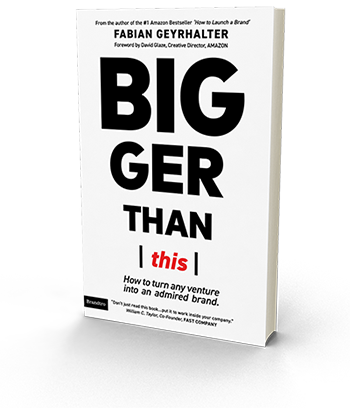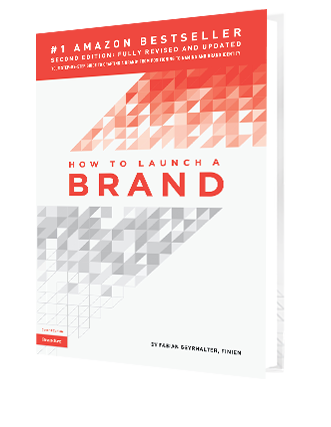Startup Advice
How To Create A Truly Meaningful Positioning Statement
Oh yes, the good old Positioning Statement; used for decades, it still is the single most powerful tool to define a new venture’s audience, category, benefits…and reason for believing. Powerful, because this is all part of one single sentence; a sentence that many Founders struggle with, as a recent poll of ours showed.
When I work with clients on defining, and refining their positioning statement as part of our Resonaid™ workshops, it takes between one and four hours to get this sentence right. Yes, power comes with responsibility, and questioning the reason for being, and for believing in any new venture is worth a few hours of pondering.
Search for the term Positioning Statement and you will be surprised by just how varied the approaches to a classic branding tool are. It is most astonishing that a majority of statements leave out the most essential part of it; the reason to believe.
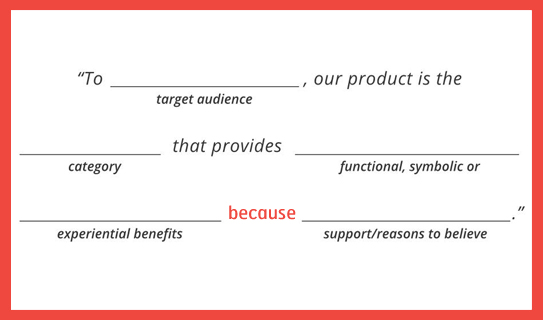
Most statements focus on the differentiators, ours (pictured above) focuses on the ‘because’ – the part that takes time to ponder and to perfect. It is also the part that will truly differentiate your venture from others. It puts your venture to the test: Is it truly a big idea? Is it important? Can it be bigger? Should it become more important? Is this why I will work late nights and put a lot at stake?
The big question ‘Why’ has been making its rounds past the branding community for a while now, most noteworthy through Simon Sinek’s TED talk. Despite its popularity, just like is the case with the mundane idea of writing a positioning statement altogether, the ‘because’, the key part that will indeed generate you sales, is often neglected. If you found an excuse not to tackle this sentence for your venture, take these words as a gentle kick in your behind and make today the day for accomplishing it. It will change your venture for the better, guaranteed.
Your New Brand’s Underlying Mission? Be The Best Waiter Imaginable.
Be a Waiter? Waiter…as in the service personnel in a restaurant?
That is exactly right. Your B2C or B2B brand should aspire to turn into the best waiter you can possibly imagine. When I spoke at Innovate Pasadena a few weeks ago, I found myself making this statement out of the blue at the beginning of my speech, and I felt it was an analogy worth sharing.
I am certain you had those moments when you were on a romantic date, an important business lunch, or in midst of a highly stimulating conversation with an inspiring person when the waiter interrupted to tell you about today’s specials. Here you are, having gone through many steps to arrive at a magic moment, just for the waiter to kill it in an instance. Of course the service industry as a whole is a great place to zoom in on when it comes to ways of ruining (or magnifying) a great experience, but the intimacy of a restaurant setting can amplify the bad moments.
Let’s focus on your favorite restaurant with your favorite waiter instead:
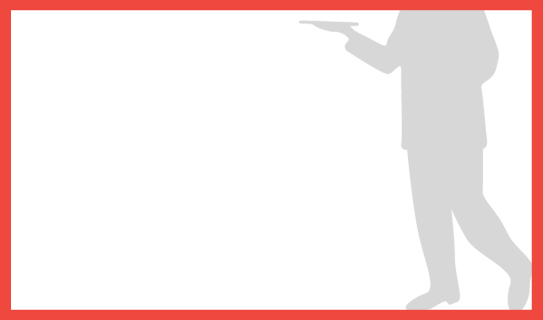
He does not interrupt, instead he knows exactly when, and how, to check on your wellbeing. It goes far beyond food orders, refills of water, pouring of wine, or asking if the food is to your liking. It is about careful observation and impeccable intuition. A great waiter knows when to appear and when to disappear, when to speak and what to say, when to assist and in what matters, and when to silently observe.…and all of this at just the right moment. A great waiter fits into the experience like a puzzle piece, when – and only when – you want, or need him. That’s what your new brand should aspire to: Equipped with a deep understanding of your target audience, your brand acts like a mindreader.
Impossible? Think of that special restaurant with that special waiter. It is happening in restaurants around the world; but only the few that put the extra effort into it – and it is mighty memorable for their customers. Aspire for your brand to put in that extra effort to turn into that amazing waiter. Your audience will remember, share and repeat their experience, regardless of the price tag.
Lure With Candy, But Sell Meat & Potatoes: Brand Strategy For Brands Built On Trends
How to outlast Trends?
Turn a Want into a Need. A Need is usually not temporary, a Want often is.

If as an entrepreneur you uncover a trend to tap into, it can be done in a short-term, unsustainable, yet highly profitable manner: Start shop quickly, gain momentum fast, maximize sales and dissolve immediately upon peak. Done deal. You did not build a brand, but sold a trendy product or service that has run its course, but in a profitable manner.
If you are in it for the long term, despite leading with a trendy product or service, and you want to build an actual brand, ensure to have a long term brand strategy formulated. It does not even need to have a direct relation to the trend, only to the audience and category. Your audience would not know, they are blinded by (and excited to buy into) the trend, but once the trend fades, the audience is yours and you will be ready to tap into them with the next product or service that speaks not to their initial Wants, but this time to their Needs. You planned for that to happen. The consumer already likes your offering, and if the trend faded, but you have another product ready to sell that fits their needs, they will make the purchase based on the trust your brand has established. You successfully created a trendy product and turned it into a sustainable brand. With this strategy you tap into a momentary want (a trend) yet allowing you to keep the same consumer for their ongoing needs.
If you are destined to dive into the risky business of building a brand based on a single trend, make sure to lead with the candy row for their wants, but then build the rest of the store to sell them the meat and potatoes they actually need.
The Number One Most Important Branding Exercise: Don’t Think Of Your Audience, Think Like Them
Imagine you own a well established, sophisticated Mexican restaurant in a wealthy neighborhood that is frequented by out-of-towners as much as by locals and has been receiving rave reviews for years. You made a good living and decide to buy the Irish pub a few doors down the street, on the same block.
So far so good.
Your logical next move is to announce to your customers that you now run another great establishment, serving different cuisine and drinks, same quality, same owner, just a few doors down. Have a pint after your dinner!
And this is where a perfectly logical move is costing you customers instead of gaining them, because you thought of your customers instead of like them.
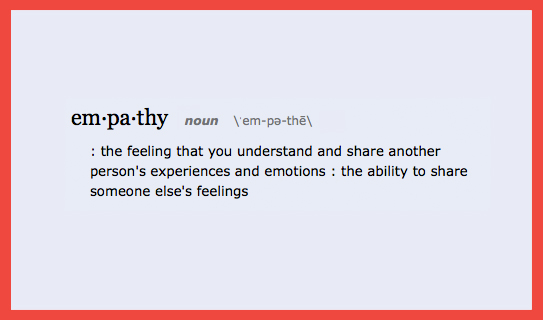
This is not a fictional story. I was reminded of that anecdote when I talked with a client last week about how he must hone in on his target audience and focus on a singular message that speaks to his specific offerings and their specific needs. Sounds so simple, but as you can see, it is not. The temptation to reach out to your customers, or to widen your offering or your clientele, often leaves the most important part of branding left behind: Empathy.
Don’t think of your customer, think like them. If you would, you would never dilute your established authentic Mexican restaurant brand (which is about an authentic and cultural food experience) with Irish pub chatter (which is about pints in quantity rather than quality). While dining at said restaurant, I saw a tabletop advertising their ‘other’ completely unrelated venture and it turned me off in an instant. So much so that I started coming in only once every month instead of once a week. If the owner would have thought about why people loved her restaurant, she would have ensured to separate the two businesses (A Brand Architecture exercise would have made that crystal clear), their respective audience and outreach.
This particular venture experienced organic growth, and that often leads to brand disasters. Thinking like your customer is the single most important thing you can do as an entrepreneur while establishing your brand, and the one that entrepreneurs tend to be doing the least. Next time you communicate on behalf of your brand, ask yourself: Is the whole enchilada worth the pint?
Brand Naming: Guess Who ‘Blue It’? A Lot Of Them Did.
When I caught up with our long-term collaborator Matt Dandurand of Media Contour the other day he mentioned that he came across a breed of hilariously ‘mis-named’ IT companies. He had to share this phenomenon with me as it was very hilarious, yet so awfully sad at the same time, and he insisted that I dedicate a blog post to it that can turn this whole thing into something educational for my readers.
I was doubtful.
Then Matt shared how, during some research he was conducting on IT companies, he came across a company named ‘Blue IT’. He thought it was funny, especially when typing the url. A quick Google search later he found a slew of them that blew it, all the same way.
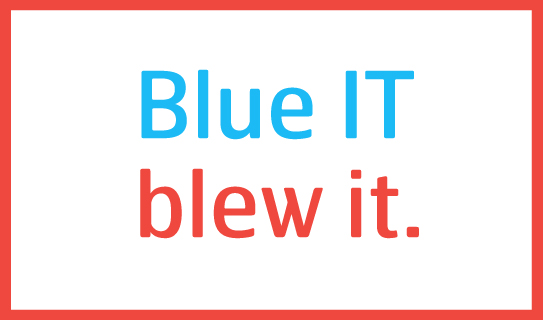
Now I am not in the business of picking on a random company’s name, it seems a bit cheap, but I do feel this serves as a great pointer to the fact that naming is to be taken seriously, regardless of company size and industry. Ample time needs to be spent to ensure, yes, that you don’t blow it. This guide will help you. It focuses on what makes a great brand name, now that we know what makes an unfortunate one.
A Call To Arms: The Task Of Disrupting Gun Violence Is Now On Silicon Valley

I write about branding and not about politics. Not because I don’t have a viewpoint, but because there are many smart(er) people discussing politics, and I am smart enough not to touch the subject of politics in my professional life. That being said, last week’s rampage of a disturbed 22 year old in a California college town (who legally purchased his guns despite known doubts about his mental state) was yet another one of many gun-amok stories we read on a nearly weekly basis in the United States. This is about politics, yes, clearly, but providing a solution to it is about society, intervention and invention, something I do like writing about.
Solutions are being brought to the table by amazing entrepreneurs (and funded by Silicon Valley VCs), such as the smart gun, but since the gun lobby won’t give in anytime soon, we won’t see these products disrupt the market. Now it is up to us brilliant civilians to intervene. If we can not stop guns from being freely accessible to anyone, what can be done to prevent these crimes from happening? Today I find this question more exciting than other disruptive innovation conversations, which for anyone who follows my thoughts knows that these are usually the conversations I enjoy the most. In times where apps can be written overnight to assist most any specific pain point, and Google (as a whole) can detect nearly anyone and anything online, how can it be that a clear plan of this attack was posted on YouTube a day prior to the massacre happening, and yet it still did happen?
Why can’t there be a search app, like mention, that specifically sifts through social media for phrases detecting sociopath attacks like these? Seems like it could be created easily and monitored by volunteer analysts. Call me naive, and it very well will not be quite that simple, but I have absolutely no doubt in my mind that some of the brilliant people reading this post can come up with an MVP that can be pushed into a live beta very quickly. If the ROI we see is one single potentially saved life, I feel that this in itself would be worth the effort. The government and the NRA let us down, now we look at you Silicon Valley; not because you are an easy target in 2014, but because I for one truly believe that at least the temporary ‘solution’ to disrupt this vicious cycle lies in the talented hands of a single programmer or an outraged entrepreneur. And there is no place better to look for that than in Silicon Valley.
CATEGORIES: Blog Startup Advice
Kill Your Brand In Order To Create It
It’s not quite as harsh as it sounds, but yes, I would like for you to imagine your new venture’s death. Here is why.
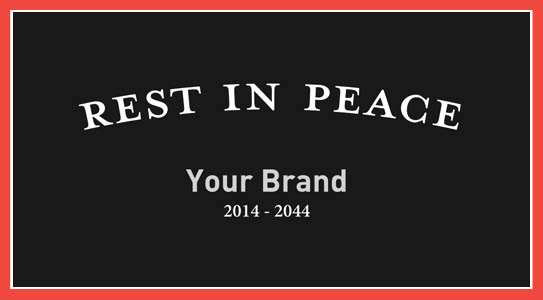
Not a proprietary exercise to my consultancy, writing a memorial speech for your brand during the Brand Foundation stage is a cruel, yet crucial step in defining your brand’s lasting values, and has been a staple in early brand development for many brand strategists. Given that those speeches are short, to the point, and always focus on only the best one has to say about the deceased, it is a great opportunity to dig deeper (did not mean for this pun to happen) into the soul and its bigger, social purpose. A brand can only leave a lasting positive impact if it cared to make a difference in people’s lives.
This is why a memorial speech is an extremely fruitful, imaginative, and most of the times rather entertaining exercise to be doing at the very onset of your brand development; and you can rarely say that about a memorial speech.
Over time we uncovered a secondary, but equally important finding during the exercise: The realization that you need to ponder about how your venture will die. And that uncovers the real long term vision for your brand: Will it be bought by Costco, improved upon and distributed to the masses? Will it become part of Marissa Mayer’s tech portfolio, giving you a nice financial push (and we don’t quite know what Yahoo! might do with it)? What is your dream, way past your 5 or 10 year business plan? If it has to end, how would you want it to end? That insight will help shape the overall business and brand strategy.
And here you thought I wanted to harm your newborn venture, while I want to do the exact opposite – watch it grow through planned retirement towards a happy ending.
The True Tech Startup Trend: Cloned Apples From Cloned Trees
Many tech startup founders pitch their project by saying ‘It’s just like Instagram, but with [filling in their differentiator],’ or, ‘Imagine Pinterest, but only [filling in their differentiator]’. Quite peculiar, most of them are located in places like Silicon Alley, Silicon Hill or Silicon Forest.
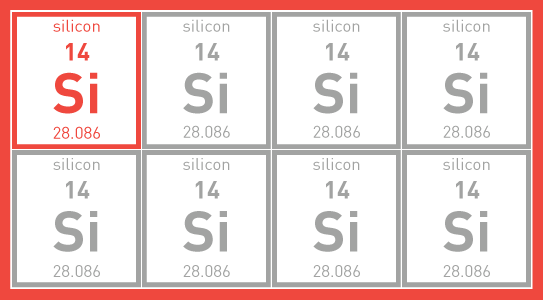
With ‘startup’ being the thing to do for many (particularly right out of college) this hot minute, it is the idea of starting something (anything really) that is often greater than the business idea in itself. Innovations turned into variations of the same, leaving the invention behind, while startup meccas themselves turned to cloned names: Silicon Alley (New York), Silicon Beach (Los Angeles’ West Side – Note: we pushed for the name Tech Coast), Silicon Roundabout (London), Silicon Forest (Portland), Silicon Hill (Washington D.C.) not to be mistaken with Silicon Hills (Austin), Silicon Border (Mexicali), Silicon Sloboda (Moscow) and many more.
Silicon Valley was named after the prosperous semiconductor manufacturers that were inhabiting the surrounding San Francisco area in the 1970’s. Today, as too many Silicon Valley clones are churning out too many Snapchat clones, it is time to remind ourselves what Silicon Valley was named after: An element; and there are no two elements that are alike. Silicon as an element only exists once. The periodic table is yours to experiment with.
Time to get creative. I can’t wait to hear about, better yet, be part of that journey.
CATEGORIES: Startup Advice Your Brand Launch: Naming
Whatever You Do To Gain New Customers, Stop.
Want to get more customers? Are you purchasing pay-per-click ads? Planning to exhibit at a conference? Rolling out some print-ad campaigns? Cold-calling perhaps? Interns acting as 24/7 Social Media Experts?
Stop whatever you are doing and think inside the box. That is, the very screen in front of you.
New ventures spend a vast amount of time and money pushing people towards their landing pages in order to get them to opt in, download an app or make a purchase. Makes sense. This is what it’s all about: Gaining Customers, Leads and Followers, quickly. The best proof of concept you can possibly get.
Yet they do not even spend a fraction of that time or money analyzing – I am not talking about A/B testing here – if that entry point actually talks the talk and looks the look.

In order to attract, you have to be attractive and not just beg for clicks. I know many ad agency execs who hate seeing their clients waste tremendous amounts of money on online media buys (a dying breed in itself) that point to horribly off-brand (design and message) landing pages. They are called landing pages because that is exactly what people do: They land, and then they take off again, into any direction, just not down the purchasing funnel. Instead of being appealing entry points, those often are quite appalling afterthoughts. It’s like throwing a party and you spend all the time and money on inviting loads of very cool and attractive people, and as the day comes around you don’t even clean the house or have cold drinks ready.
If you want to get more customers, put yourself in their shoes first and work until you get yourself to click that buy, submit or follow button on your (let’s call them…) entry pages. Only then should you even consider looking for new customers ‘by entry of’ your web site, which, really, is the main entrance to your brand today.
Make that house look like it has never looked before. Polish that glossy red door and put your name on it. This is the time to shine and to let people in.
Happy spring-cleaning!
The Number One Reason Customers Will Be Attracted To Your Brand
To find out, ask yourself this simple question:
What Is Your Brand’s Scent?
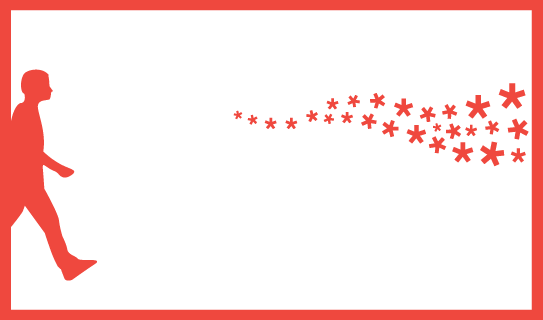
I am not referring to the overwhelming perfume infused air you have to walk through when entering an Abercrombie & Fitch store (a scented brand environment). I am talking about the metaphoric scent your brand emits to attract, distract, or utterly confuse your audience.
During a delightful call with Stuart MacDonald (Freshbooks’ CMO) earlier this week, Stuart used the word ‘scent’ when we talked about branding. It really hit home. Like animals, we are attracted to scents, in the literal and metaphoric fashion. Nike emits the scent of inspiration and innovation for athletes, Oprah the scent of belonging and community.
When thinking about your brand, and why customers will be attracted to it, think about what scent your brand has. It will make you think beyond logo, beyond copy, beyond imagery and campaigns. You will have to take a step back and start to interact with your brand from afar, as if it was the very first time you ever ‘smelled it’. I hope it smells like roses, unless roses are not really your brand.
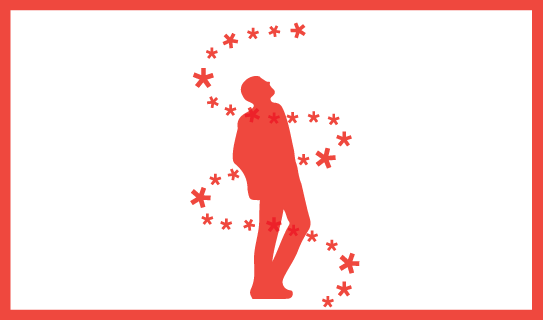
The closer you will get to your brand, the stronger and more intense (= focused) the scent will get, and once you are deeply immersed in it you will realize if you are in fact emitting the right scent altogether. It’s powerful. Try it today and let me know how it educated your actions.

